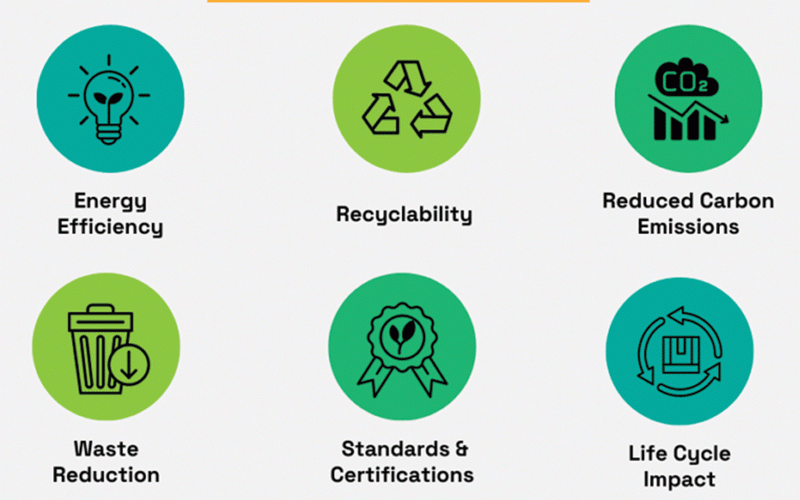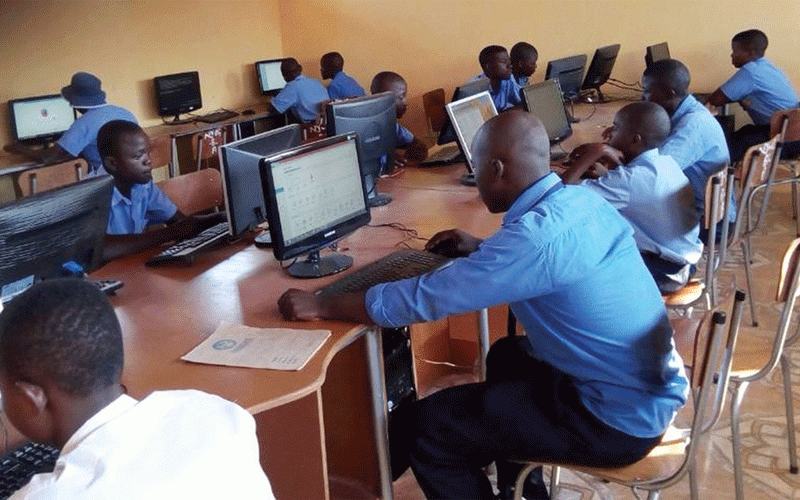
In an era where technological marvels are reshaping every facet of our lives, healthcare is no exception. Imagine a scenario where an AI system confidently diagnoses a patient, and a trusted doctor readily agrees with its verdict.
Now, ask yourself: what happens when that AI, despite its confidence, is tragically wrong? This is not a far-fetched dystopia, but a cautionary tale from recent experience, a case that could have had dire consequences if not for timely human intervention.
A year ago, I was invited to consult for a leading healthcare organisation that had recently integrated an advanced AI diagnostic system into its workflow. The promise was enticing: faster disease detection, more efficient analysis of thousands of patient records and ultimately, better healthcare outcomes.
Yet as the system flagged a case indicating a high probability of a rare autoimmune disorder, an uneasy feeling crept in. The doctor, like countless others trusting in technology, quickly accepted the system’s recommendation for an aggressive treatment regimen. But was this rapid trust in the technology truly justified?
In reviewing the case, it soon became clear that the AI had misinterpreted a subtle MRI anomaly. Instead of the rare autoimmune disorder it had indicated, the patient’s condition was something entirely different, one that did not require such a drastic intervention. This near miss was a stark reminder: even the most sophisticated systems can be fallible. How many lives could be compromised if we allow machines to take the helm without sufficient human oversight?
AI, human judgement boundaries
Imagine a world where healthcare professionals abdicate their decision-making responsibilities entirely to algorithms. Would this not strip away the invaluable wisdom honed by years of experience and personal patient interactions? A primary lesson from the case is the importance of setting clear boundaries.
AI systems should be designed as decision support tools, not as infallible oracles of diagnosis. When we define where AI assistance ends and human judgment begins, we create a robust framework that marries computing power with clinical expertise.
- I rejected Zanu PF scarf: Burna Boy
- NMB workers take on employer
- Mbavara eyes to resurrect Matavire’s music legacy
- I rejected Zanu PF scarf: Burna Boy
Keep Reading
In Zimbabwe, where healthcare challenges include limited resources and fluctuating access to specialist care, the allure of AI is understandably strong. However, does adopting AI without clear guidelines risk exacerbating an already fragile system? Establishing accountability protocols becomes essential here.
Doctors must be encouraged to question, review, and, when necessary, override AI recommendations. Only by fostering an environment where technology and human expertise complement each other can we ensure that patients receive the best possible care.
Building trust gradually, responsibly
Another critical principle that emerges from this narrative is the value of building trust gradually. It is tempting to believe that once a technology demonstrates its prowess, complete reliance is justified. Yet, in the realm of healthcare, the stakes are simply too high for blind trust. How can we allow ourselves to become complacent when every decision could directly impact a person’s life?
A prudent approach involves beginning with low risk implementations. By using AI systems in scenarios where errors carry minimal harm, healthcare providers can monitor performance, collect data, and ultimately refine their usage in more sensitive areas. For example, consider a pilot project in a rural Zimbabwean hospital where an AI tool assists in preliminary patient screening.
The tool might quickly flag anomalies, but every output would be meticulously reviewed by an experienced clinician. Such an iterative process not only builds confidence in the system but also allows for continual learning from minor near misses that, if unchecked, might snowball into major misdiagnoses.
Is it not wiser, then, to let AI gradually earn its place in our health frameworks, rather than being thrust, untested, into critical decision making roles? By validating each step of its usage with human intervention, we ensure that the promise of technology translates into real world safety and efficiency.
Imperative of human oversight
Perhaps most fundamentally, the case underscores the inescapable need for human oversight. An AI might be capable of processing vast datasets with incredible speed, but it lacks the experiential insights and ethical considerations of a human being. Should we then risk putting a machine in the role of ultimate decision maker? The answer, unequivocally, is no.
Human oversight is not just a safe guard; it is a vital component of responsible AI integration. Regular audits, continuous feedback loops and stringent controls must be part of any system that aspires to influence patient treatments.
After all, how many times have we heard of technology failing in unexpected ways when placed in critical roles? In Zimbabwe, where medical professionals often grapple with challenging working conditions, the introduction of AI must be seen as an ally rather than a replacement. Ensuring that every AI-based recommendation is subject to human review protects not only the patient but also the integrity of the healthcare system.
Contextualising AI in Zim
How does all this relate to Zimbabwe? In a country where resources are limited yet the potential for technological leapfrogging is enormous, AI could revolutionise healthcare delivery. However, the introduction of such systems must be tempered by careful, contextualised strategies. It is one thing to deploy AI in well-funded, urban hospitals with access to constant technological upgrades; it is quite another to integrate these systems in rural or under resourced clinics where the margin for error is alarmingly slim.
Zimbabwe’s healthcare landscape is characterised by a mix of modern medical facilities and traditional practices, each with its own strengths and limitations. When AI is introduced, it must be tailored to the local context. For instance, training the system on data that mirrors the specific medical challenges and patient demographics of Zimbabwe could improve its accuracy. If an MRI misinterpretation in a European context led to a misdiagnosis, would a similar error occur if the system were fine -tuned with local data? These are questions that demand attention from both technologists and practitioners alike.
Furthermore, the governance of AI in healthcare must involve local experts, policymakers and community leaders, ensuring that the technology adapts to regional nuances. Do those developing the AI systems fully appreciate the unique challenges faced by Zimbabwean doctors? Not handling these cultural and contextual differences can lead to an overreliance on technology that was never intended for one-size-fits-all solutions.
Dialogue, future of healthcare
The discussion need not be limited to technical experts alone. What role do patients and the community have in defining a safe, accountable AI framework? Open dialogues and public debates are crucial. In a democratic society, particularly within a country such as Zimbabwe where health concerns are often at the forefront of public discourse, transparency in how AI is implemented is essential. How can we claim accountability if the very people affected by these technologies are left in the dark?
A candid conversation about risks, benefits and the necessary checks and balances should involve all stakeholders. By directly engaging with the public through forums, media discussions and even town hall meetings, healthcare organisations can start to demystify AI. This approach not only builds trust but also ensures that the system operates under robust ethical guidelines that reflect the community’s values.
Call for system wide audits
Every near miss, every failure, is an opportunity for learning. The misdiagnosis incident serves as a potent reminder that even advanced AI systems can err. Regular audits and continuous performance reviews are, therefore, not optional; they must be intrinsic to the operational framework. How can we be so sure that today’s impressive innovations won’t become tomorrow’s public health disaster if we fail to scrutinise them rigorously?
In Zimbabwe, where healthcare professionals already work under significant pressures, adding another layer of technological oversight may seem burdensome. Yet, the alternative could mean a deepening of mistrust amongst communities and worsening healthcare outcomes. By adopting a culture of rigorous continuous improvement and documentation, healthcare providers can adapt and refine AI systems, ensuring that technology consistently serves as a bridge, not a barrier, to quality care.
Rhetorical questions to ponder
Are we prepared to accept technology without constant, vigilant oversight?
Why should we trust a machine with our lives when history shows that even the best systems can stumble?
In an environment as diverse and complex as Zimbabwe’s, how can we ensure that AI is tailored to serve local needs rather than imposing external, one-size-fits-all protocols? These questions are not meant to undermine the potential of AI but rather to guide us towards a more thoughtful approach where human expertise and technological innovation coexist in harmony.
Integrating AI with human expertise
At the heart of the matter lies the realisation that the challenge is not about choosing between AI and human expertise but about fostering an integration where technology supports and strengthens human decision making.
Could it be possible that the perfect solution lies in a dynamic partnership, where AI handles large scale data analysis and humans provide nuanced interpretative judgment? The answer appears to lean towards yes, but only if the necessary frameworks are in place.
In practical terms, this calls for a reorganisation of how we perceive both technology and practice. Rather than ceding control to automated systems, we must reserve the right to question, override and continually refine their outputs. This partnership dynamic will be the cornerstone of future healthcare models in Zimbabwe. It paves the way for a system where the strengths of both human intuition and machine precision are harnessed, reducing risks while enhancing outcomes.
AI accountability frameworks
How, then, do we implement these safeguards in real world settings? The solution lies in three interlinked components:
- Clear demarcation of roles: AI should be positioned as an assistant, not a decision-maker. This demarcation is vital in establishing accountability and ensuring that every recommendation is subject to human scrutiny;
- Controlled implementation: Starting with low risk applications allows for the gradual accumulation of data and insight. This measured approach fosters trust and ensures that AI systems can be scaled responsibly; and
- Mandatory oversight: Introducing regular audits and maintaining a feedback loop helps identify and correct errors swiftly, safeguarding against systemic failures.
In Zimbabwe, this approach demands investment not only in cutting edge technology, but primarily in people training clinicians to interpret AI outputs critically and encouraging a culture where questioning is welcomed. Does this not sound like a more balanced and sustainable pathway to progress?
Accountability: Broader implications
Though our discussion today centres on healthcare, the lessons learned extend far beyond a single sector. As AI systems gain prominence in various realms, be it law enforcement, finance, or even personal assistance, the principles of accountability, gradual integration, and sustained human oversight become universally relevant. This case from healthcare is a microcosm of a broader debate about technology in our society. How do we reassure ourselves that these systems, however advanced, are always in check by the human moral compass?
Transparency, we must agree, is the key. Organisations, both public and private, need to communicate their protocols, report on audit results and involve community stakeholders.
In Zimbabwe, this can be achieved through combined efforts involving government bodies, healthcare institutions and civil society organisations. Together, these groups can foster a culture of trust and openness, ensuring that AI does not become a black box but remains an accountable partner in the quest for improved healthcare.
At the end of the day, the challenge is not to choose between the brilliance of AI and the wisdom of human expertise. It is about forging frameworks in which both can work in tandem, responsibly and effectively. In the heart of Zimbabwe’s healthcare system, where every decision impacts lives and communities, the potential for AI to bring transformative change is enormous.
Yet, that potential will only be realised if we commit to thorough oversight, ongoing audits, and most importantly, if we never lose sight of the human element in every clinical encounter.
Sagomba is a chartered marketer, policy researcher, AI governance and policy consultant, ethics of war and peace research consultant. — Email: [email protected]; LinkedIn: @Dr. Evans Sagomba; X: @esagomba.











